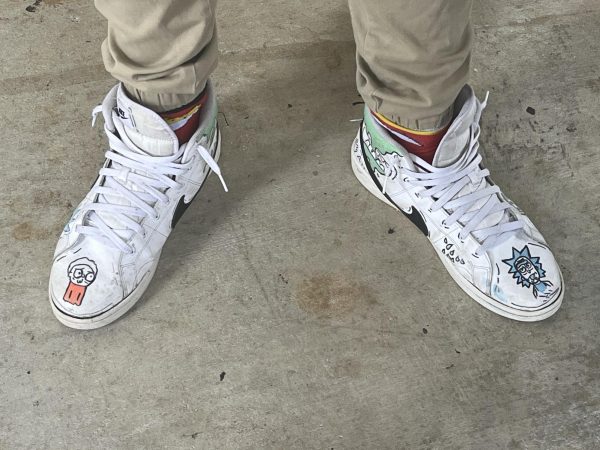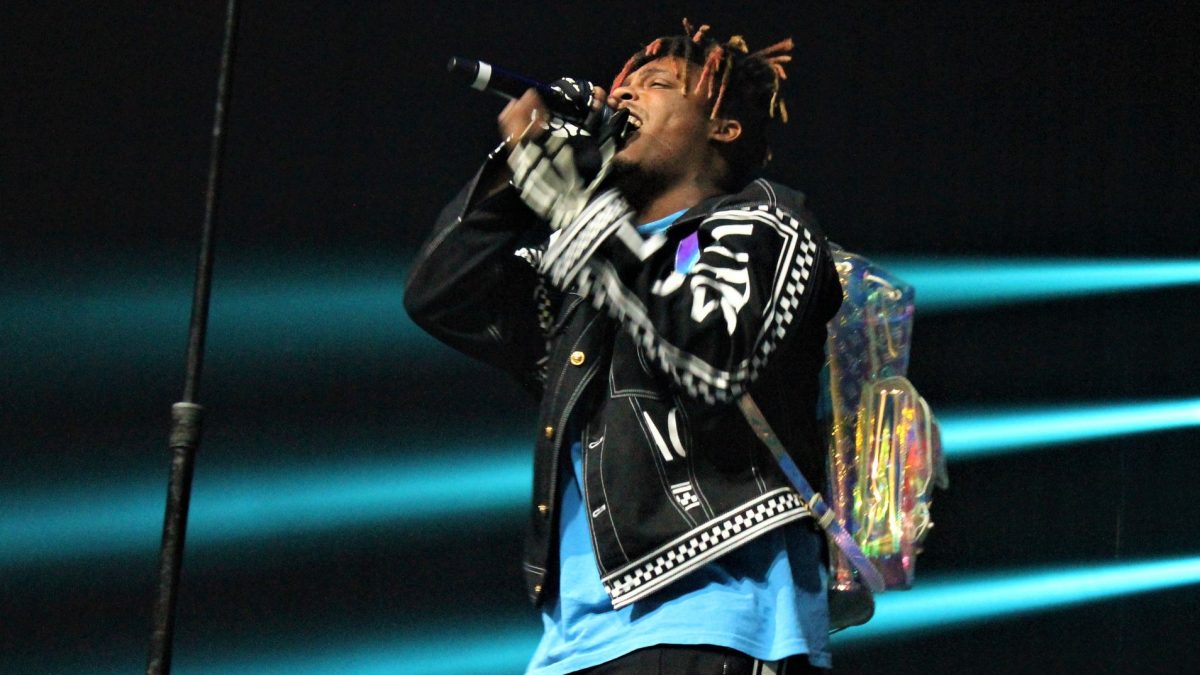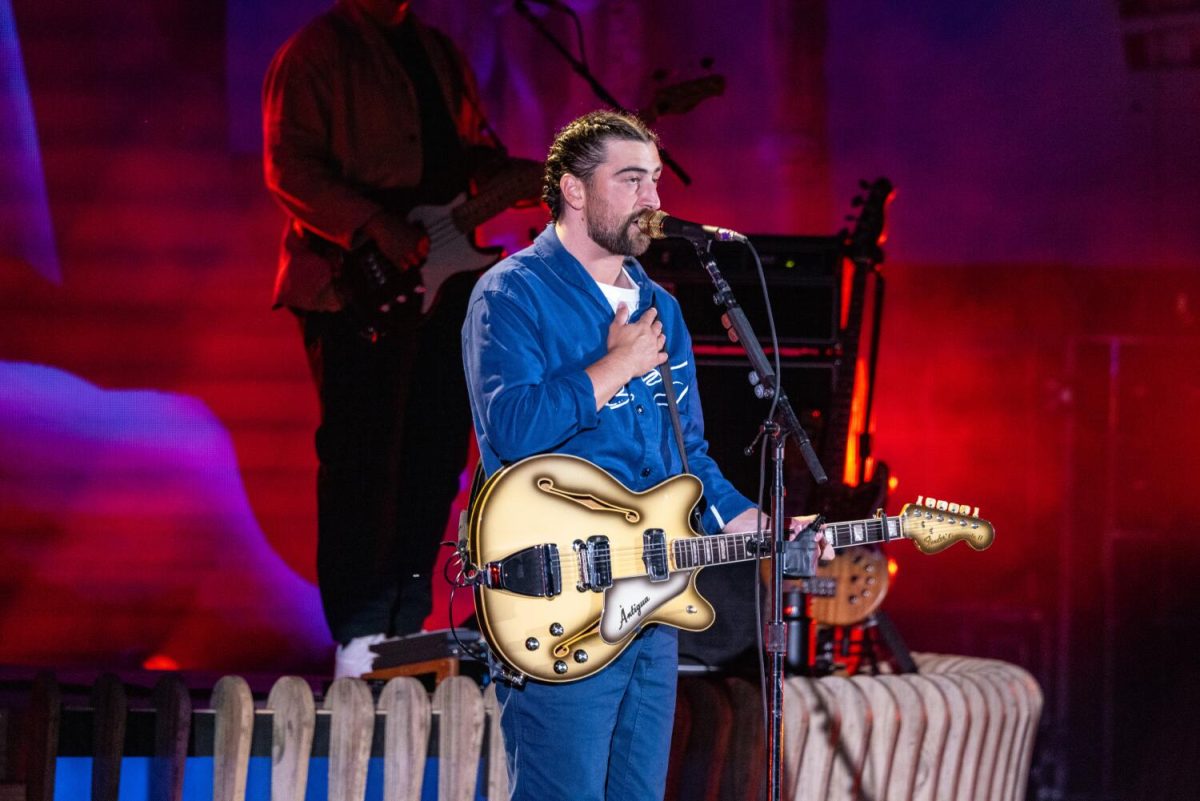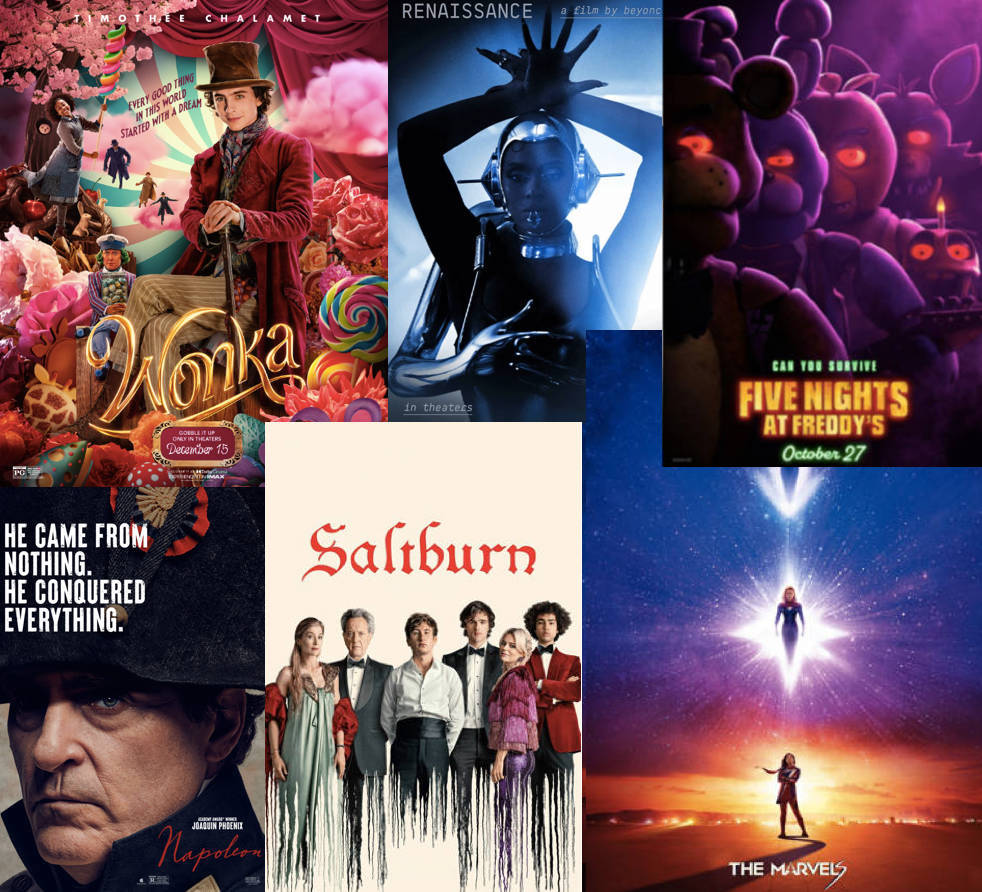Since their creation, sneakers have transformed in both purpose and style, making them among the oldest and versatile pieces of fashion across history. Sneakers were originally invented in England during the 1860s for the upper-class to use while playing croquet and tennis. The rubber soles made them the ideal shoe as they were both durable and comfortable and eventually they even became more commercially used by professional sports players.
Sneakers’ deep connection and integration into the sports world allowed them to be viewed by the global eye. Outside of their practical use, sports were the defining factor in commercializing sneakers for fashion and design quality. Influenced by their favorite athletes, sports fans are now the driving force in sneaker culture and trends.
Combined with street fashion, hip-hop culture and the internet, sneaker culture has been revolutionized into its own movement. The increased connectivity of online communities, such as those on TikTok, have caused sneaker aficionados, dubbed “sneakerheads,” to create a subculture that prides itself on collecting high quality sneakers with intricate attention to design.
At Marjory Stoneman Douglas High School, sneaker culture is a defining part of students’ fashion expression. Students wear a wide variety of sneakers that represent their personality, choosing to collect their favorite shoes, ranging from limited edition celebrity collaborations to vintage sneakers.
Nike
Nike is a brand most recognizable for their memorable swoop logo and famous slogan, “Just Do It.” The brand is known for its vast array of sports products and attire, but most specifically for their extensive footwear and sneaker catalog.
The company was founded by Phil Knight, a track and field athlete at the University of Oregon, and his coach Bill Bowerman. Bowerman had a passion for customizing and enhancing the running shoe to improve his athletes’ ability. Knight was among the first to try Bowerman’s shoe, and in 1964 Knight and Bowerman founded Blue Ribbon Sports. The company’s shoes differed from others on the market at the time, as they distributed their shoes with the Japanese company Onitsuka Tiger. Manufacturing costs were cheaper in Japan than in Germany where most shoes were manufactured.
In 1971, Blue Ribbon Sports split from Onitsuka Tiger, officially rebranding itself as Nike. The company quickly found success with its Nike Cortez running shoe, solidifying the brand as a go-to for athletic and sports wear.
However, a shift in Nike’s popularity occurred in the 1980s, when the shoe brand began collaborating with popular athletes and celebrities to make custom sneakers. For example, in 1984, they signed basketball player Michael Jordan to further market to sports and fashion fans.
The Air Jordan One gained popularity, transcending its intended purpose as a basketball shoe and becoming a cultural phenomenon. It was adopted by streetwear enthusiasts, especially in the early 1990s hip-hop movement. The Air Jordan shoe line remains one of the most profitable shoe lines to date.
Other popular Nike collaborations include the Air Mag, created for Back to the Future Two, the Air Swoopes—made for Sheryl Swoopes, the first signature Nike sneaker designed for a woman—Nike LeBron James, Nike x Travis Scott and the Kobe 8 Protro collaborations.
In recent years, Nike Air Forces and Nike Dunks have also become popular. Originally launching in 1982 and 1985 respectively, the Air Forces and Dunks have a wide array of styles and colors. This makes them popular for customization and for students to share their personality through.
Converse
Converse was founded by Marquis Mills Converse, who originally made the startup Converse & Pike to sell rubber boots in Boston retailers. However, the market’s instability caused him to make the Converse Rubber Shoe Company years later, with the first Converse shoes being made on April 30, 1909.
The brand’s athletic shoes in the 1910s marked the beginning of their strong ties to basketball. They were the shoes worn by the United States’ team in the first ever Olympic basketball game, and Converse was also known for putting out an annual basketball yearbook as a love letter to the sport. In the 1960s, 90% of professional and college basketball teams were wearing the shoes.
Converse are no longer used as a basketball shoe due to their lack of foot support compared to other sneakers. However, they are trying to make a comeback in the industry with the redesign of their original basketball shoe and the signing of basketball player Shai Gilgeous-Alexander.
Expanding beyond the sports world, Chuck Taylor, who had originally joined the Converse team for a sales job, was essential in the promotion of the shoe brand for a more casual purpose. His achievements and close ties to the brand encouraged Converse to include his name as a part of the design on the All-Star High Tops, since he had played a huge part in their popularity.
Nike bought Converse for $305 million in 2003 and since the acquisition, Converse has become more of a lifestyle sneaker. Today, people wear it as an everyday shoe, pairing it with their outfits for stylish and casual looks.
“I wear converse because of how versatile and comfortable they are,” sophomore Emma Schwartz said. “I’m even able to personalize them through changing my shoelaces to different colors. I can wear very funky socks that are hidden by the shoes as well.”
The most popular shoe currently is Converse’s All-Star High Tops, recognizable by their rubber sole and toe, the criss-crossed laces on the front of them and the circle with the logo on the side, including Chuck Taylor’s name on both sides of the star.
Adidas
Adidas started out only producing sports shoes, with their original logo being a spiked track and field shoe sitting in between the two ds in Adidas. Their logo today is the three stripes that appear on every shoe they make. Adidas’ founder, Adolf Dassler, found that the three stripes stuck out most when it came to photographing the shoes, which is why it is included on the sneakers.
Adidas’ turning point was when track-and-field star Jesse Owens wore a pair at the 1936 Berlin Olympics, allowing Adidas to quickly gain recognition and fame.
After World War II, Adolf and his brother Rudolf, a business partner at the time, split, with Adolf continuing to run Adidas while Rudolf created Puma. Soccer players then proceeded to adopt Adidas shoes, causing the brand to start making soccer balls.
Currently, Adidas’ most recognizable shoe is their Superstar sneaker. They are a simple white sneaker with three black stripes along the sides and a black section displaying their logo on the back, as well as the tongue of the shoe.
Over the years, Adidas has had many famous collaborations and runaway successes, branding their mark on sneaker culture. These include their very own Adidas Sambas line, and a collab with BAPE in 2003, still considered an instant classic by many.
Another collaboration, arguably producing their most famous and sought-after shoe, is Adidas’ collaboration with rap mogul Kanye West, or Ye. The brand was originally started with Nike in 2009, but was brought over to Adidas in 2013. Together, the brand and the superstar have produced 236 different pairs of Yeezys, with each pair costing at least $200 and running up to $585. In 2022, the brand cut ties with West; however, the shoes the collab created are still extremely desirable and wanted by many in the sneaker world.
Vans
The shoe brand Vans dates back to 1966, when brothers Paul and Jim Van Doren, along with their two partners Gordon Lee and Serge Delia, opened a shoe manufacturing company on 704 E. Broadway in Anaheim, California. Around the early 1970s, they found large success from unexpected consumers: local skateboarders.
Back then, skaters liked the way the shoes looked and how the soles felt, making them appealing to them. Noticing this success, the founders decided to start marketing their brand as a skate company, and started manufacturing their shoes to better suit skater’s interests.
Through the rest of the 1970s and early 1980s, the company would make a wide variety of different shoe concepts and ideas aimed towards being the world’s best skate shoe. Many of these old designs have become classics today.
It was at this time that the locals coined the name ‘Vans’ for the shoe, which ended up sticking, becoming the shoe’s moniker for decades to come. From then on, Vans was a household name in skating, known for sponsoring skating events, always giving back to the skating community and ultimately for being one of the most famous skating brands of all time.
Today, Vans are still prevalent in and outside the world of skating, with their most signature designs being worn worldwide. These include Half Cabs named after the skate trick of the same name, the Vans Classic Checkered Slip Ons and their Old Skool shoe.
A recent trend with Vans in skateboarding is the rising popularity of Vans’ Knu Skool Shoes, originally created in 1998. Skaters like the chunkiness and bulkiness of the shoe, making them durable against a skateboard’s grip tape. The shoe is also favored due to its look, serving as a throwback to early 2000s skate fashion.
Sneaker Maintenance

Sneaker Trends
The immense diversity within sneaker culture has allowed various shoe trends to emerge. One of the most popular recent trends is platform sneakers. Platform shoes have a thicker sole, giving wearers more foot cushioning and support, as well as increased height. However, the chunkier look of platforms is not preferred by some, causing debate on what is better: platform or normal soled sneakers.
The high top versus low top sneaker debate has been around for a long time, both alternating as the popular style over the decades. High tops are sneakers extending to or a little above the ankle, whereas low tops end right at the ankle. People’s preferences depend on their style and design choice when combining them with outfits. Brands like Converse and Vans have begun to offer high and low top sneakers of the same styles, so that people can choose which they prefer more.
Another less common shoe trend is customizing them. Customizers use mediums like paint and markers to draw on their sneakers to add their own character, color and personality to them. Shoe customization was especially popular during the pandemic, where people would take plain white canvas shoes, like Vans, and transform them into something new.
“I customize all my shoes myself and like to resell them,” freshman Kushna Morris said. “I like to draw on them because I think it gives them more detail and looks better that way, having cartoon characters on your shoes looks good.”

Conclusion
Despite their range and diversity, sneaker culture continues to be a unifying factor in student fashion and personality. As new trends emerge, students are able to explore their personal style and find community amongst people with similar taste.















![[Review] ‘The Inheritance Games’ series warms readers’ hearts](https://eagleeye.news/wp-content/uploads/2025/01/Screen-Shot-2025-01-08-at-8.37.08-AM.png)











